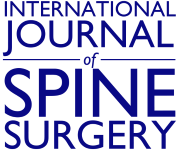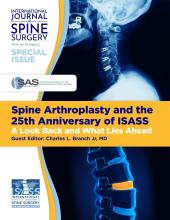ABSTRACT
Background Our purpose was to evaluate the efficacy of the extrapendicular approach for unilateral percutaneous vesselplasty in dealing with Kummell disease patients.
Methods Twenty-seven patients undergoing vesselplasty at our institution were enrolled in the study. Vesselplasty was performed using percutaneous extrapendicular technique. Pain, restoration of vertebral body height, and cement leakage were evaluated in the process.
Results Substantial pain relief was attained in all the patients. The visual analogue scale improved significantly from pre- to postoperation (P < .05), and remained unchanged at every follow-up. The anterior vertebral body heights were significantly corrected after operation (P < .05). No cement leakage was found.
Conclusion This new technique of vesselplasty offers statistically significant benefits in Kummell disease patients. It also makes vesselplasty feasible, safe, and effective.
- ©International Society for the Advancement of Spine Surgery







